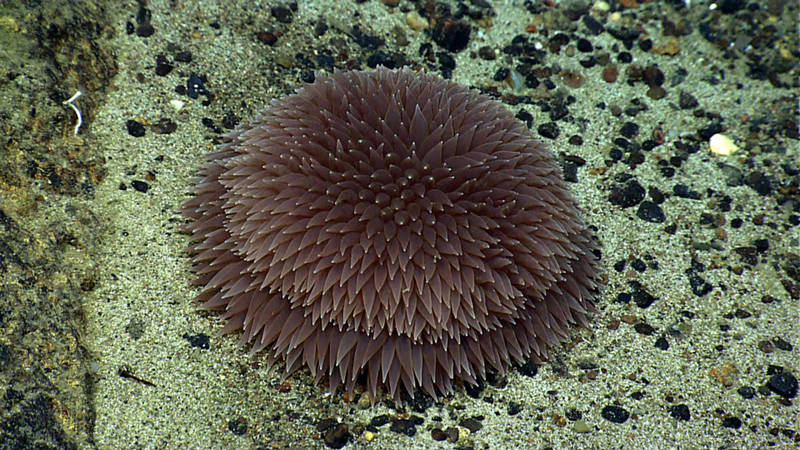
A highlight of Dive 11 was this pompom anemone, the first one we have seen on this cruise. Image courtesy of NOAA Okeanos Explorer Program, Our Deepwater Backyard: Exploring Atlantic Canyons and Seamounts 2014. Download larger version (jpg, 1.3 MB).

A highlight of Dive 11 was this pompom anemone, the first one we have seen on this cruise. Image courtesy of NOAA Okeanos Explorer Program, Our Deepwater Backyard: Exploring Atlantic Canyons and Seamounts 2014. Download larger version (jpg, 1.3 MB).
Okeanos Explorer EX1404L3
Dive 11: Physalia Seamount. Video courtesy of NOAA Office of Ocean Exploration and Research. Download (mp4, 49.8 MB)
Today, remotely operated vehicle Deep Discoverer (D2) conducted the first-ever remotely operated vehicle exploration of Physalia Seamount, which prior to the dive was the last unexplored seamount on the East Coast inside the U.S. Exclusive Economic Zone. D2 landed at 2,579 meters on a cobbled bottom populated by urchins and brittle stars. As D2 continued up slope, it encountered burrowing anemones, sea stars, dead urchin shells, a lophogastrid shrimp, a halosaur fish, and corals (sea pens and Anthomastus). From there, the geology became sedimentary with carbonate deposits and pillow lava layering. Here, D2 encountered more octocorals, a diversity of sponges, fan worms, black coral, shrimp, brittle stars, sea cucumbers, a cusk eel, squat lobsters, a rattail, and feather stars. Highlights were a sea spider feeding on hydroid, a rare Aplacophoran mollusk, a pompom anemone, and an octopus as D2 prepared to leave the bottom.